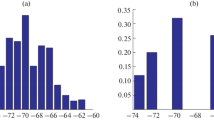Abstract
The positioning technology based on receive signal strength (RSS) fingerprints has become one of the hottest research spots with its advantages of simple deployment, low cost, and single parameter. However, in the limited space, the multipath and shadowing, result in poor separability of the fingerprint data, and low accuracy of target localization. In this paper, a novel RSS fingerprints positioning algorithm that is based on fuzzy kernel clustering SVM is proposed to combat the multipath and shadowing effects. The first step of the proposed positioning algorithm is to use kernel function to map the traditional fingerprints sample data to high-dimensional feature space to generate fuzzy classes. The second step is to generate binary-class SVM of fuzzy class based on the relationship between classes and internal discrete information of each class. After that, we can use the binary fuzzy class SVM to dichotomize the classified fingerprints in the first step, and combine these dichotomous SVMs into a handstand classification binary tree. And thus, the proposed positioning algorithm achieves quick and accurate positioning. Experimental results show that the positioning accuracy and locating stability of proposed positioning algorithm are improved by 38.73% and 59.26%, respectively, compared with the traditional RSS fingerprints algorithm.





Similar content being viewed by others
References
Li, S. (2017). A review of feature detection and match algorithms for localization and mapping. IOP Conference Series: Materials Science and Engineering, 231, 1–7.
Ferreira, A. F., & Goncalves, et al. (2017). Localization and positioning systems for emergency responders: A survey. IEEE Communications Surveys & Tutorials, 99, 2836–2870.
Kong, Z., & Lu, Q. (2017). A brief review of simultaneous localization and mapping. In IECON 2017-43rd annual conference of the IEEE industrial electronics society, October, pp. 5517–5522.
Panchpor, A. A.,et al. (2018). A survey of methods for mobile robot localization and mapping in dynamic indoor environments. In 2018 conference on signal processing and communication engineering systems (SPACES) IEEE (pp. 138–144).
Mendoza-Silva, G. M., Torres-Sospedra, J., & Huerta, J. (2019). A meta-review of indoor positioning systems. Sensors, 19(20), 4507.
Dongsheng, H. A. N., Wei, Y. A. N. G., et al. (2013). A weighed centroid localization algorithm based on received signal strength indicator for underground coal mine. Journal of China Society., 38, 522–528.
Wang, B., Zhou, S., et al. (2015). Indoor localization based on curve fitting and location search using received signal strength. IEEE Transactions on Industrial Electronics, 62, 572–582.
Ding, G., & Zhang, J., et al. (2013). Overview of received signal strength based fingerprinting localization in indoor wireless LAN environments. IEEE International Symposium on Microwave, (pp. 160–164).
Rocamora, J., Ho, W. H., & Mak, M. W., et al. (2020). Survey of CSI Fingerprinting-based indoor positioning and mobility tracking systems. IET Signal Processing., 14(7), 407–419.
Henri, N., & Marzieh, D., et al. (2017). A survey on wireless transmitter localization using signal strength measurements. Wireless Communications and Mobile Computing, (pp. 1–12).
Xiaofeng, R. O. N. G., & Na, Y. A. N. G. (2010). Location error analysis and simulation of location fingerprinting technology based on RSSI. Journal of Xi’an Technological University, 30, 574–578.
Bahl, P., & Padmanabhan, V.N. (2000). RADAR: an in-building RF-based user location and tracking system. In Proceedings of the 19th Annual Joint Conference of the IEEE Computer and Communications Societies, Tel Aviv, Israel, March 26–30 (2000).
Youssef, M., & Agrawala, A. (2004). Handling samples correlation in the horus system. In Proceedings-IEEE INFOCOM, Hong Kong, China, 27-11.
Battiti, R., & Le, N. T. et al. (2002). Location-aware computing: A neural network model for determining location in wireless LANs. In International Semiconductor Conference, CAS 2007, Trento, Italy, April 14–16.
Moghtadaiee, V., & Dempster, A. G. (2014). Indoor location fingerprinting using FM radio signals. IEEE Transactions on Broadcasting, 6, 336–346.
Guo, W., Wu, R., et al. (2018). Deep learning scene recognition method based on localization enhancement. Sensors,18,.
Hsieh, C. H., Chen, J. Y., & Nien, B. H. (2019). Deep learning-based indoor localization using received signal strength and channel state information. IEEE Access., pp. 1–1.
Bai, S., Luo, Y., Yan, M., et al. (2020). Distance metric learning for radio fingerprinting localization. Expert Systems with Applications., 163, 113747.
Hoon, L. J., & Hwan, B. J., et al. (2018). Deep learning-based computer-aided diagnosis system for localization and diagnosis of metastatic lymph nodes on ultrasound: A pilot study. Thyroid Radiology and Nuclear medicine, (pp. 1332–1338).
Wang, X., & Gao, L., et al. (2016). CSI-based fingerprinting for indoor localization: A deep learning approach. IEEE Transactions on Vehicular Technology, 66, 763–776.
Li, B., Wang, Y., et al. (2005). Method for yielding a database of location fingerprints in WLAN. IEEE Proceedings Communications, 152, 580–586.
Kivinen, J. & Smola, A.J., et al. (2002). Learning with kernels. IEEE transactions on signal processing, 34, 1–28.
Zhang, X., Xiao, X. L., et al. (2007). A new method for determining the parameter of gaussian kernel. Computer Engineering, 33, 52–53.
Acknowledgements
This work is supported by the Natural Science Foundation of the Jiangsu Higher Education Institutions of China (No.18KJB510011), The Natural Science Foundation of Jiangsu Province (Grants No. BK20160294), The National Natural Science Foundation of China (No. 61701202), Key Research and Development Program of Jiangsu Province of China (BE2019317).
Author information
Authors and Affiliations
Corresponding author
Additional information
Publisher's Note
Springer Nature remains neutral with regard to jurisdictional claims in published maps and institutional affiliations.
Rights and permissions
About this article
Cite this article
Wang, Y., Shang, Y., Tao, W. et al. Target Positioning Algorithm Based on RSS Fingerprints of SVM of Fuzzy Kernel Clustering. Wireless Pers Commun 119, 2893–2911 (2021). https://doi.org/10.1007/s11277-021-08377-4
Accepted:
Published:
Issue Date:
DOI: https://doi.org/10.1007/s11277-021-08377-4




